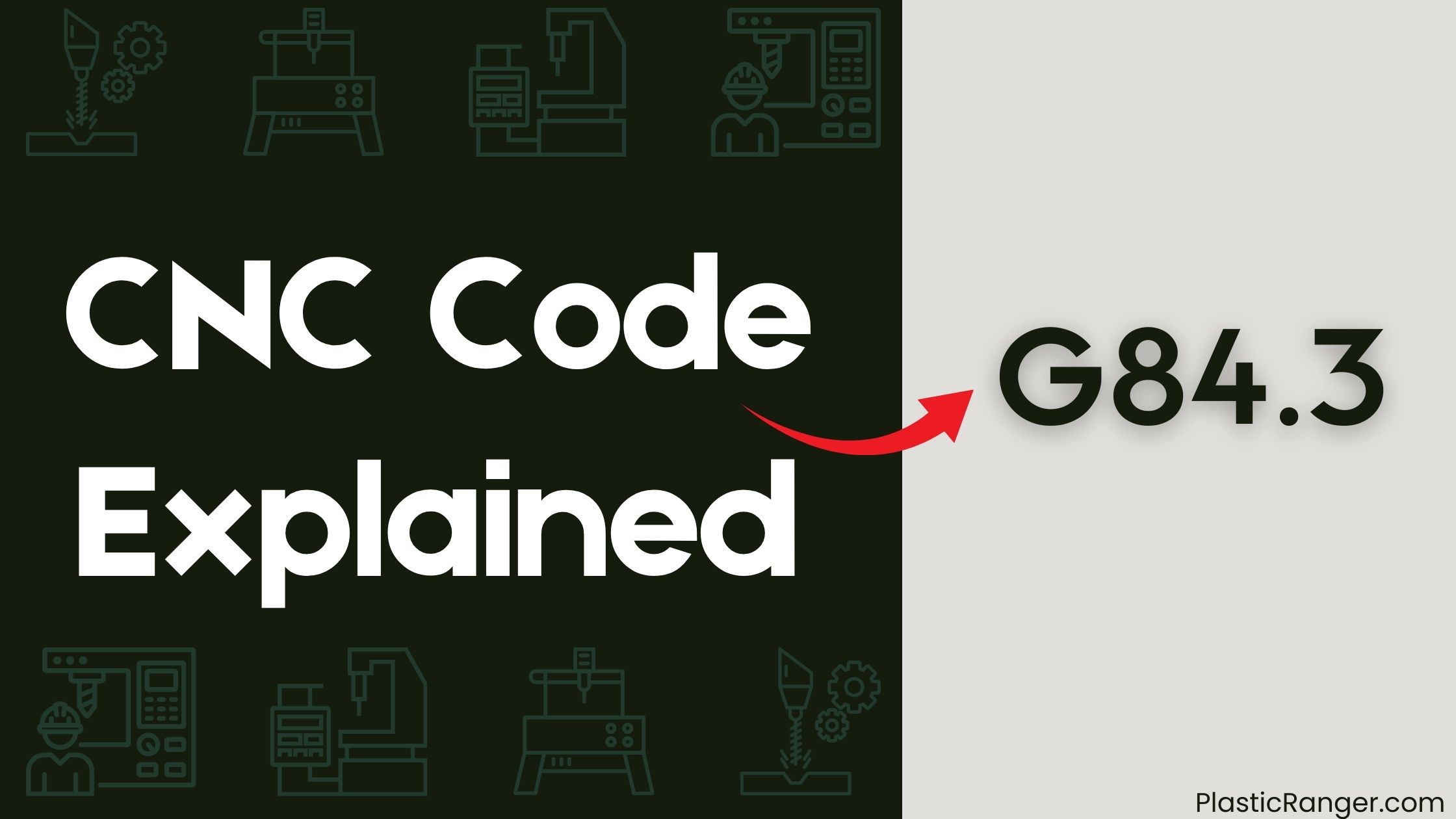Welcome to our simple guide on the G84.3 CNC code. Whether you are new to CNC programming or an experienced machinist, understanding the G84.3 code is essential.
This guide will explain everything you need to know about this unit mode command—what it is, when to use it, and why it matters.
(Step-by-step.)

Key Takeaways
- G84.3 tapping cycle consists of five steps: preliminary canned cycle motion, starting the spindle forward, moving the Z-axis, reversing the spindle, and dwelling.
- Z value defines the final thread depth, and R value sets the retract distance from the datum after each thread is tapped.
- Optional parameters include Q value for peck distance and F value for thread pitch in the G84.3 tapping cycle.
- Correct specification of parameters is crucial for successful thread creation in G84.3 tapping operations.
- G84.3 code is used for peck tapping operations, which involve dividing the tapping process into smaller, manageable increments to prevent tap breakage.
G84 Tapping Cycle Overview
When programming a CNC mill, you’ll frequently encounter the G84 tapping cycle, a fundamental code used for tapping operations.
This G-code requires a minimum of three parameters: Z (depth of hole), R (retract value), and F (pitch of thread). The Z value specifies the final depth of the thread, while the R value defines the retract distance from the datum after each thread has been tapped.
You can use the G84 cycle to create both rigid and peck tapping cycles, with the addition of a Q value defining the peck distance for peck tapping. This versatile code is essential for creating threads in pre-drilled holes with precision and accuracy.
Peck Tapping Cycle Parameters
In conjunction with the G84 tapping cycle, peck tapping cycle parameters facilitate controlled tapping operations by dividing the tapping process into smaller, manageable increments.
You set these parameters to define the pecking action, which involves repeatedly retracting the tap to a specified depth, then advancing it further into the hole.
This process helps prevent tap breakage and improves thread quality.
The peck tapping cycle parameters you’ll need to specify include the peck retract amount, the peck increment, and the dwell time at the bottom of the hole.
G84 Code Syntax and Format
You’ll need to format your G84 code correctly to guarantee successful tapping operations.
The G84 command is used for rigid tapping operations, and its syntax is vital for precise control. The basic format of the G84 command is G84 X~ Z~, where X and Z represent the coordinates of the tapping location.
The X-axis specifies the radial distance from the spindle center, while the Z-axis specifies the axial distance from the current Z position. You can also include additional parameters, such as the tapping speed and feed rate, to fine-tune the operation.
Make sure to follow the correct syntax and format to avoid errors and guarantee smooth tapping operations.
Tapping Cycle Steps and Options
As you delve into the G84.3 tapping cycle, understanding its step-by-step process is crucial for successful thread creation.
This cycle consists of five steps: preliminary canned cycle motion, starting the spindle forward, moving the Z-axis at the programmed feed rate to the Z-depth, reversing the spindle, and dwelling for the P number of seconds.
You’ll need to specify the Z value, which defines the final thread depth, and the R value, which sets the retract distance from the datum after each thread is tapped.
Optional parameters include the Q value for peck distance and the F value for thread pitch.
Safety and Best Practices
When tapping cycles go wrong, they can go very wrong, resulting in broken taps, damaged machinery, or even accidents. You must pay attention to detail when coding G84 tapping cycles to avoid these issues. Rigid tapping, in particular, requires proper coding and attention to parameters to prevent broken taps or damage. High-speed tapping (e.g., 1200RPM) demands careful planning and execution to avoid accidents.
| Tapping Risk | Consequence | Prevention |
|---|---|---|
| Forgetting G84.1 code | “Real interesting tapping event” | Double-check code |
| Improper rigid tapping | Broken taps or damage | Follow best practices |
| High-speed tapping | Accidents | Plan and execute carefully |
| Friction-welding | Tap damage or breakage | Monitor tapping process |
| Lack of knowledge | Poor tapping outcomes | Register on Practical Machinist’s forum |
CNC Codes Similar to G84.3
Code | Mode |
|---|---|
| G84 | Tapping Cycle |
| G84.2 | Rigid Tapping Cycle |
| G85 | Boring and Reaming Cycle |
| G86 | Boring Cycle |
| G87 | Back Boring Cycle |
| G88 | Boring Cycle |
| G89 | Boring Cycle with Dwell |
| G74 | Peck Drilling Cycle |
| G73 | Peck Drilling Cycle |
| G83 | Peck Drilling Cycle |
| G81 | Drilling Cycle |
| G82 | Drilling Cycle with Dwell |
Quick Navigation
